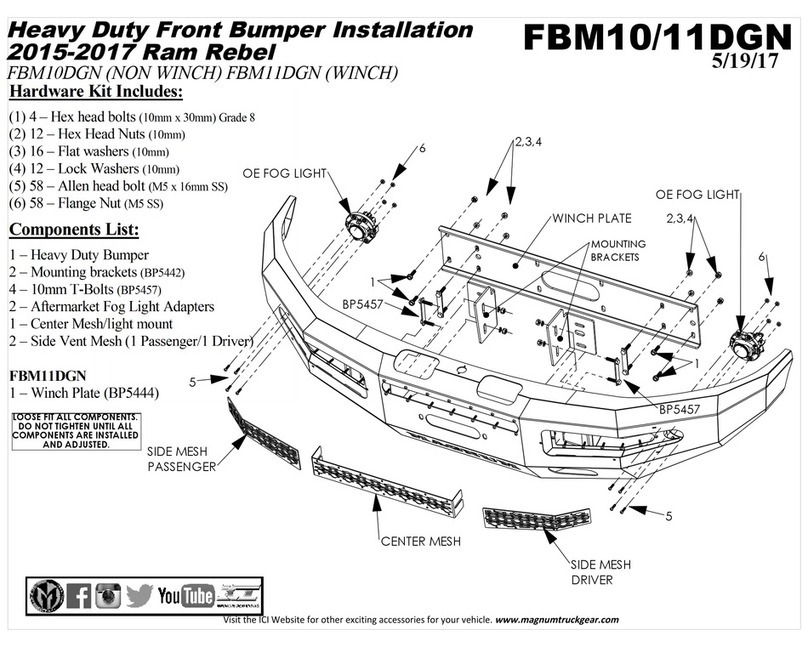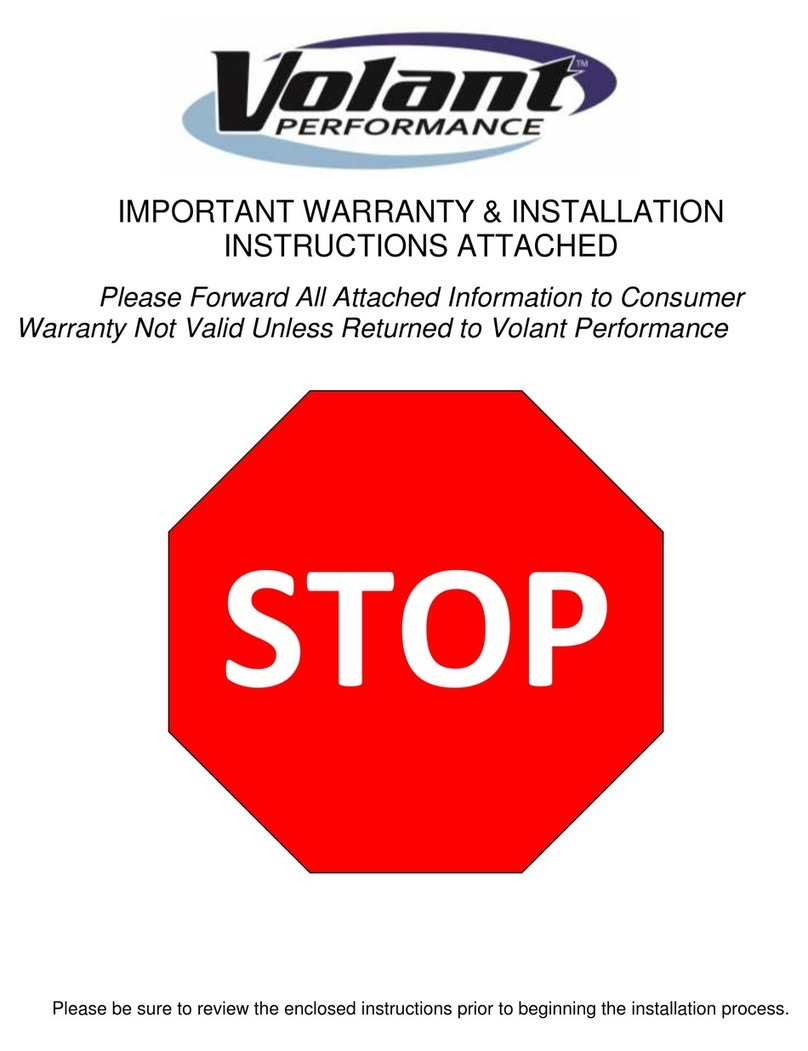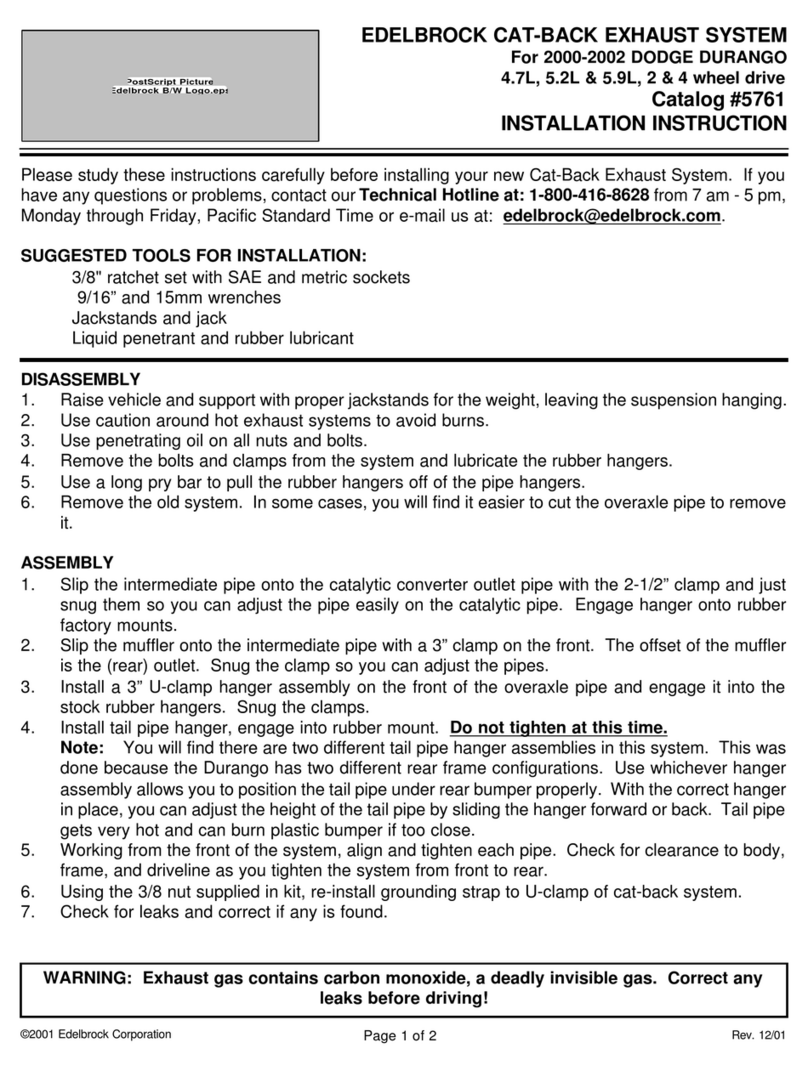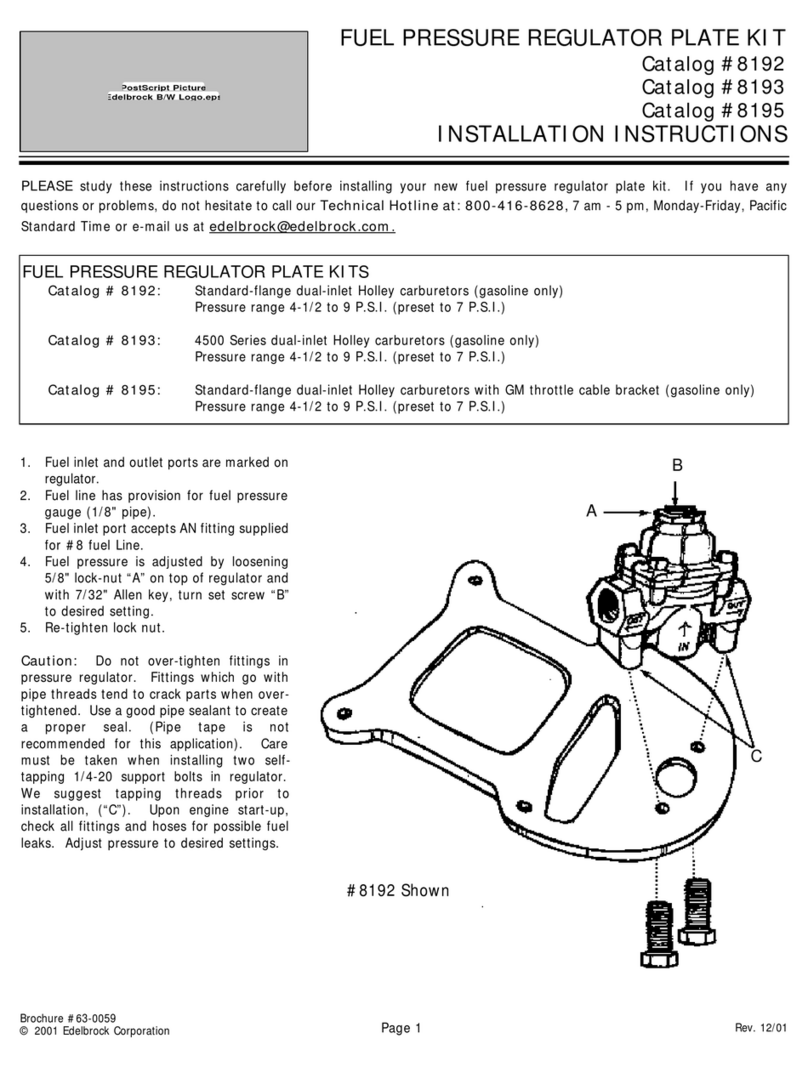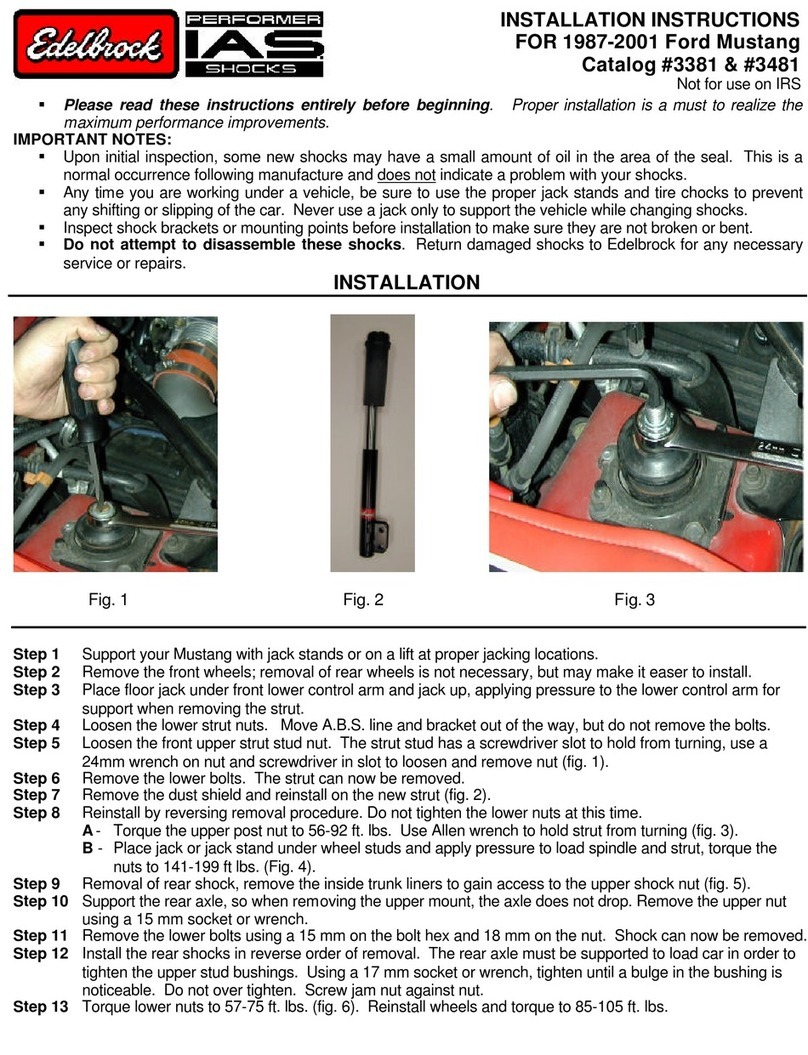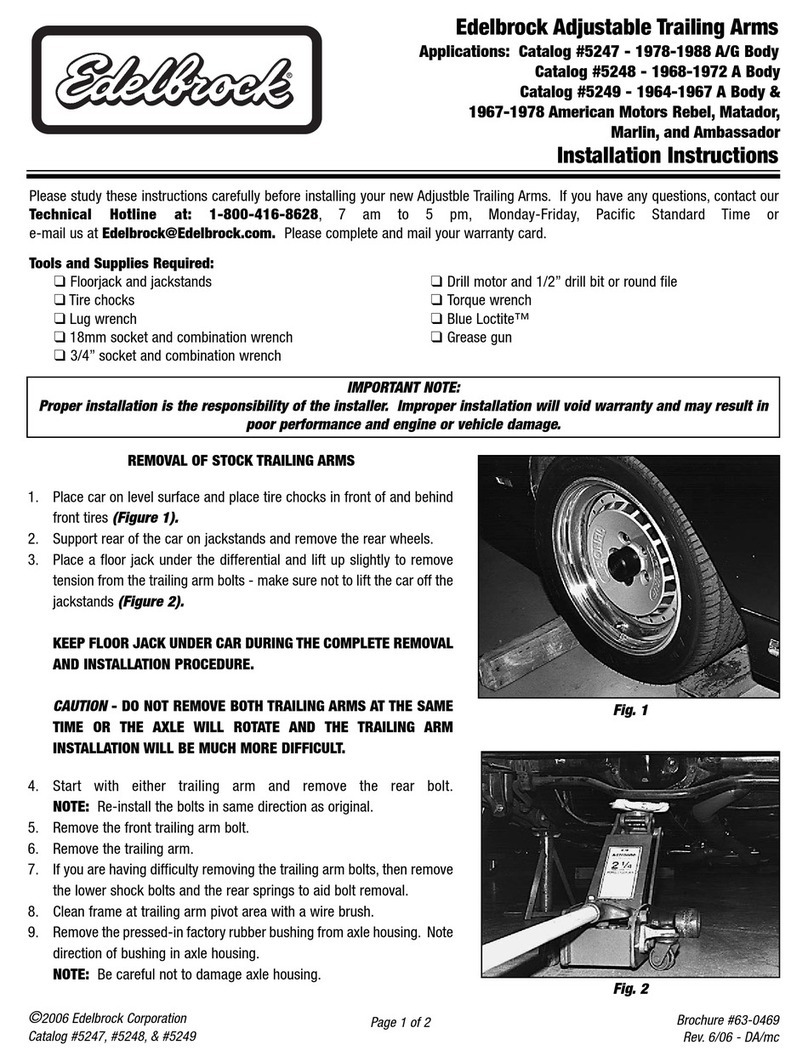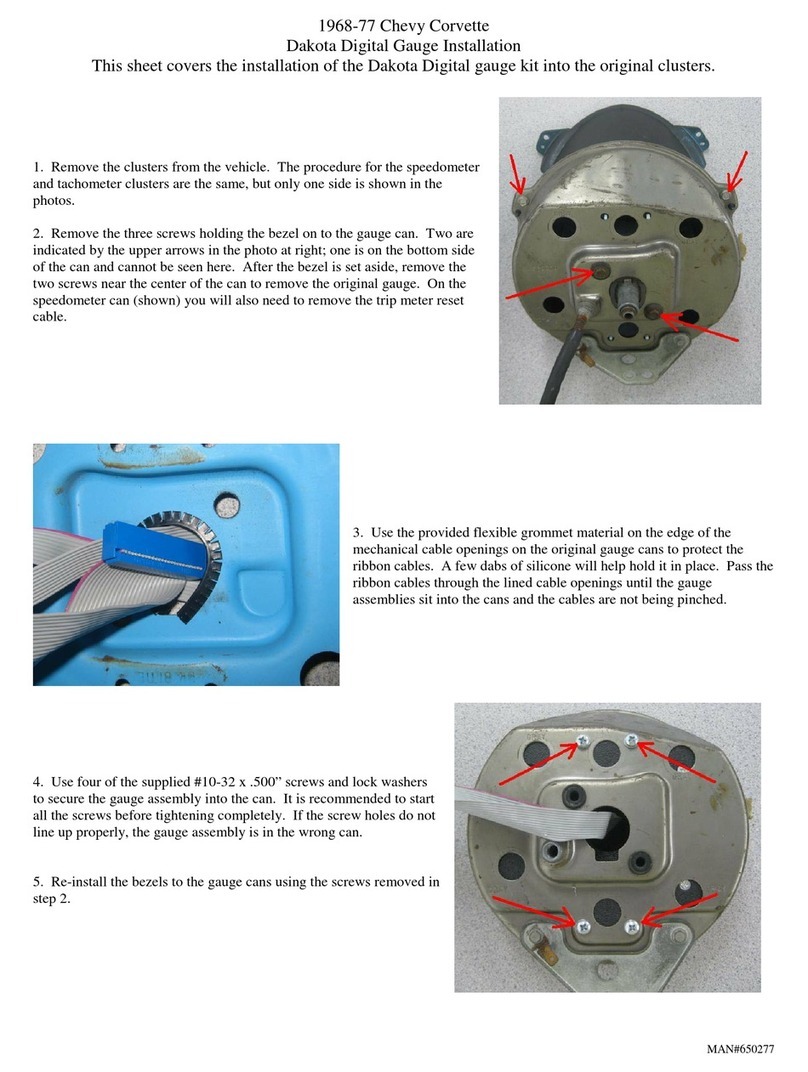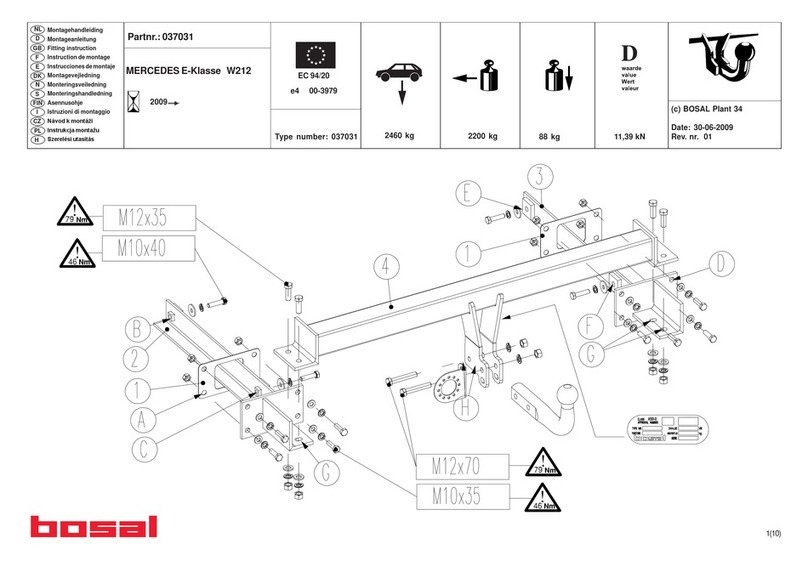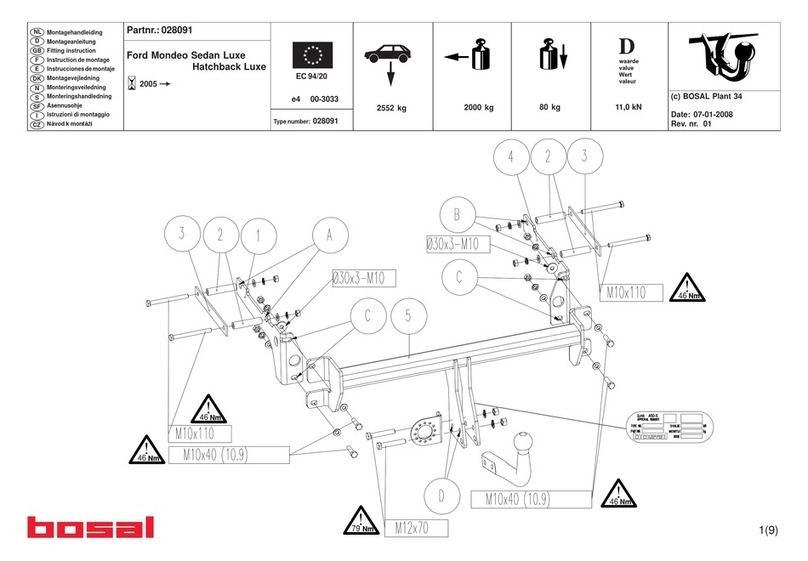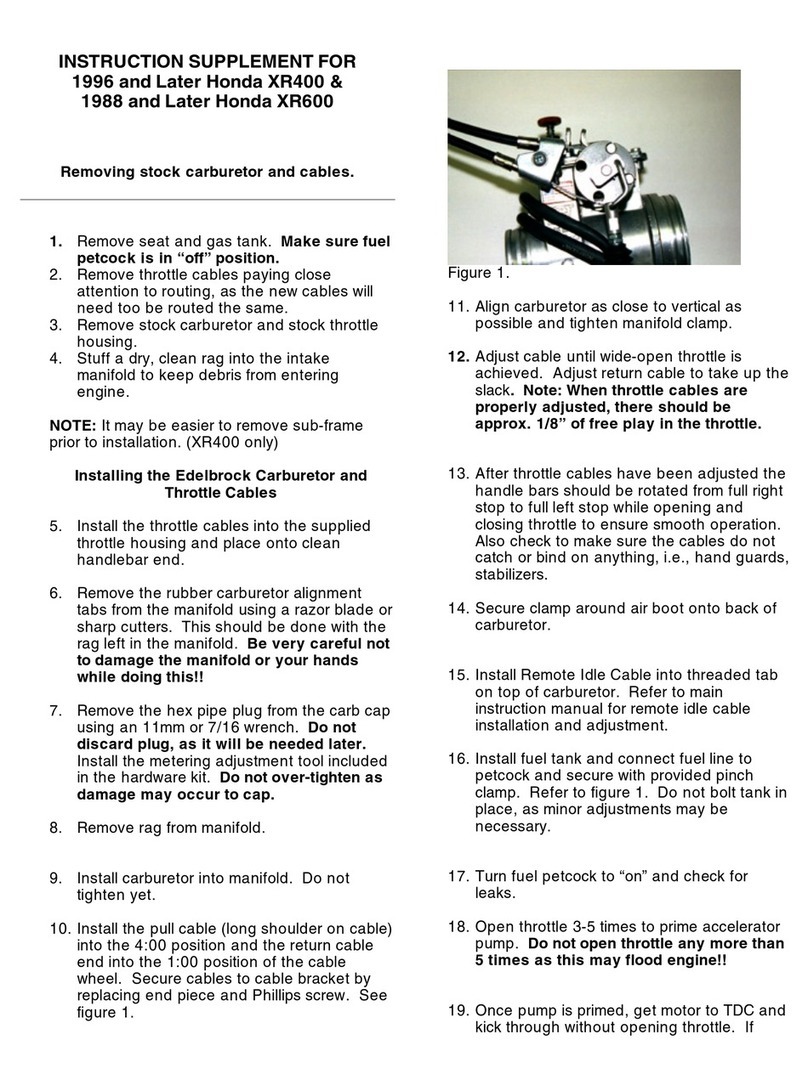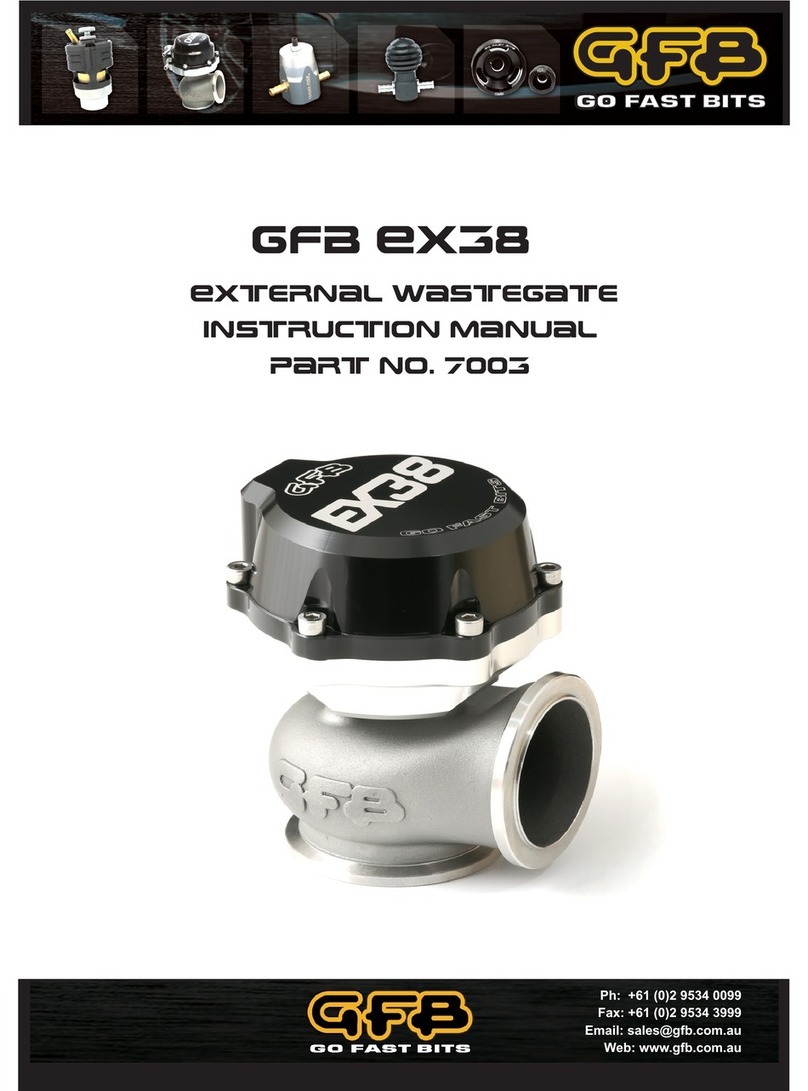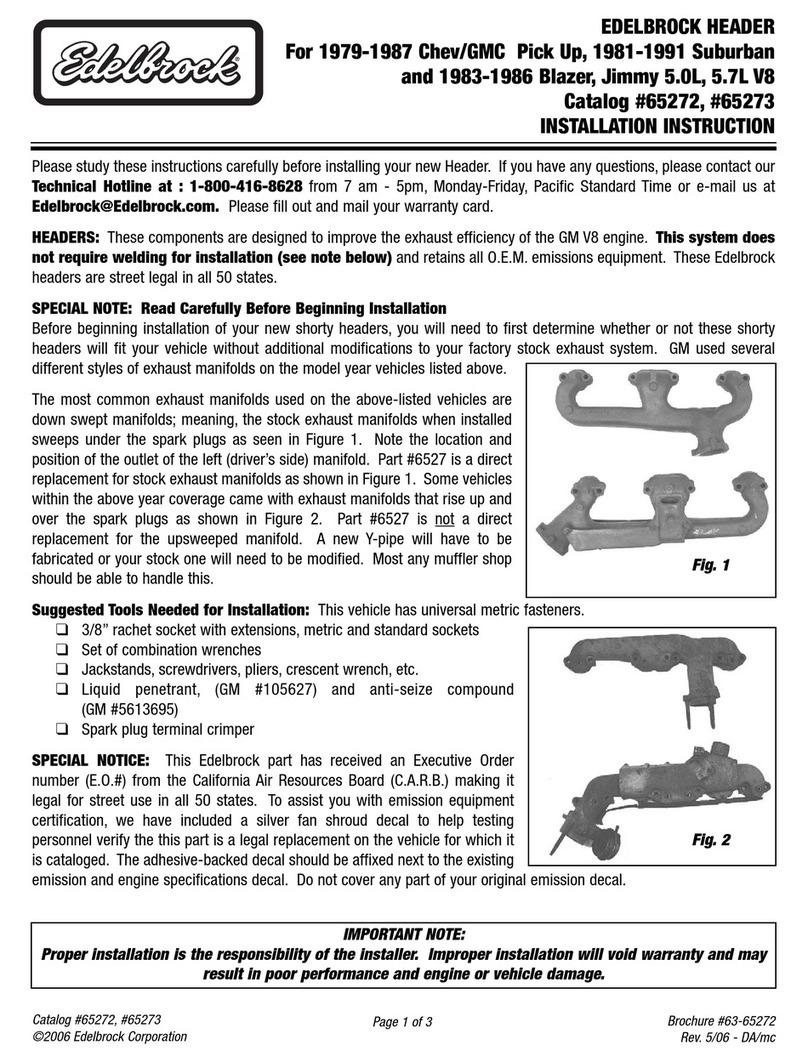
3. Be especially careful when working on battery
terminal connections. Do not connect any two or more
terminals together unless the connection is a proper
and correct electrical one.
d.When lifting the battery, observe the following
precautions:
1. Unless completely insulated lifting beams are available,
temporarily cover the exposed metal components
of the cells with an insulating material (plywood, thick
rubber, etc.) to reduce the risk of a short circuit from the
chain or hooks.
2.Use a lifting device with two hooks which are
electrically insulated from each other to prevent short
circuits.
3. Follow the instructions on handling loads covered in
OSHA 29 C.F.R. 1910.179(n).
e.Keep the vent plugs firmly in place at all times except
when adding water or taking hydrometer and temperature
readings.
f. Only personnel who have been trained in battery
installation, charging and maintenance should be allowed to
work on the battery.
2. SPILLS AND RECYCLING
a. Spills of sulfuric acid should be handled with
consideration for the following:
1. Do not touch spilled material without appropriate personal
protective equipment (e.g., face shield, acid resistant gloves,
etc.).
2. If possible, stop the flow of spilled acid with sand or
other non-combustible absorbent and/or neutralize with
bicarbonate of soda, lime or other neutralizing agent.
3. Place spill residue into compatible containers. If spill
occurs from a battery, waste should be tested for presence
of hazardous constituents prior to disposal.
4. Do not allow the discharge of any electrolyte or acid
into sanitary or storm sewers.
5. Spills which enter the environment (through sewers,
waterways or soil) must be reported, as applicable, to
city,state, or federal environmental agencies as necessary.
6. Spills which occur during transportation of batteries
should be reported to CHEMTREC (1-800-424-9300) a
24-hour service for emergency assistance.
b. Handling and storage of new and used (spent) batteries:
1. Batteries and battery components should be handled
only in accordance with the safety procedure outlined in
Section 1.
2. All batteries, as well as other hazardous substances,
should be stored under cover and on an impervious surface
with adequate containment to prevent dispersion of
contaminants to the environment.
3. Batteries and acids should be stored away from sewer and
storm drains and from sources of heat (see Section 19).
4. Leaking or cracked batteries and cells should be contained
to prevent further leakage.
5. Generally, there are no storage time restrictions for batteries
or for spent lead-acid batteries which are destined for recycling.
However, state regulations and local fire and health ordinances
should be consulted for special restrictions on the storage of
hazardous substances, including batteries and acid.
6. Sulfuric acid is listed as an extremely hazardous
substance under the federal Emergency Planning and
Community Right-to-Know Act (EPCRA). Notification
and/or reporting to federal, state and local agencies may be
The threshold planning quantity (TPQ) for sulfuric acid is 1,000 pounds.
c. Recycling:
1. Spent lead-acid batteries which are destined for recycling are not
regulated under federal hazardous waste regulations or by most
state regulations. Contact your state environmental agency for
additional information.
2. Under federal land ban restrictions and individual state battery
recycling laws, spent lead-acid batteries can be disposed of only by
recycling/reclamation at permitted secondary lead smelters or other
authorized recycling facilities. Spent batteries should be sent only
to facilities which have obtained EPA or state hazardous waste
permits for the storage of spent batteries prior to recycling. Call
800-538-3627, x 1652 to reach the Recycling help desk.
3. Acid which is removed from spent batteries may be regulated
hazardous waste. Facilities which generate spent acid may be
subject to state or federal regulations for large or small quantity
generators applicable to labeling, manifesting, transportation and
reporting.
3. INTRODUCTION
The battery-operated electric vehicle fills a unique position
in the constantly enlarging field of materials handling.
Whether it be in a manufacturing plant, on a railway platform, in a mine,
or in airline ground support equipment, these battery-propelled vehicles
have advantages over other means of transporting equipment.
The vital power source of these vehicles is a storage battery.
The most reliable, yet simple, portable power package.
The purpose of this manual is to provide a better understanding
of the characteristics, operation, and care of this battery so that all of
its advantages and economies may be realized.
4. FUNDAMENTALS
Battery: A device for converting chemical energy into electrical
energy. All batteries are made up of individual compartments called
cells
,connected in series, so their individual voltages add up. Size,
internal design and materials used control the amount of energy
available from each cell. A
lead-acid battery
is a number of cells or
containers filled with a mixture of sulfuric acid and water called
electrolyte. The
electrolyte
covers vertical plates made of two types of
lead. Chemical action between the acid and the lead creates electrical
energy.
Volt,
V
:Afork lift’s running speed and its lifting speed are
determined by a battery’s voltage. And since each cell in a lead-acid
battery has 2 volts, multiply the number of cells by two and you
know the voltage. Thus, it automatically follows: the more cells,
the higher the voltage, the faster the fork lift’sspeed.
Ampere,
A
:An ampere is the standard measure of the
amount of electric current. The amount or flow can be large
(amperes) or small (milliamperes). Flashlight batteries are
measured in milliamperes. Lift truck batteries are measured in amperes.
While it’s important to match battery amperage with the total amperage
requirements of a fork lift truck, you still won’t know if you have enough
current to keep a truck running a full shift. You will know if you next
consider a battery’s ampere-hour rating.
Ampere-hour,
A.H.
:The higher a battery’s ampere-hour capacity, the
longer a fork lift will run. How long is always specified along with the
ampere-hour rating on the battery label. For example, 680
ampere hours (A.H.)
at the six hour rate
means three things: First, 680
A.H. is the total capacity of the battery.Second, if the fork lift’smotor
and attachments draw 113 amperes continuously for six hours, the
battery will be completely drained of usable power in six hours. And
third, if the forklift’s motor and attachments draw only 90 amperes
continuously, the battery will provide energy for almost 8 hours and
have a power to spare. Obviously, a battery that’s not completely
drained during its work shift has an improved life span over a battery
that is. (To maximize the life of your battery it should not be discharged
below 80% depth of discharge.) Now,by taking
2
